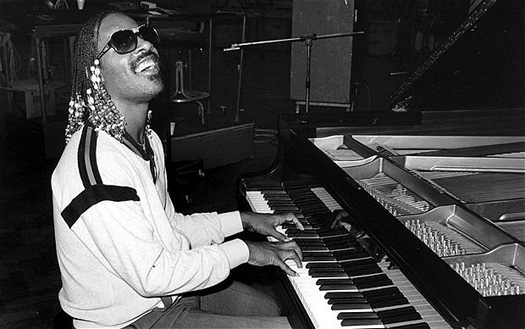I am working with an online student where we almost exclusively learn how to play the chords of songs so she can sing along with them. She recently asked to learn Stevie Wonder's song "As." Needless to say, it didn't take much convincing for us to work on this one.
Check out the video below of me playing the voicings. I start by playing the voicings with some rhythmic embellishment then simplify things by playing as written on the sheet music (below). Tell me what you think of this new split screen MIDI technology I'm experimenting with, so you can get a better idea of what notes I am playing.
Chord voicings
Once again, as I talked about my previous blog entry about "Let's Groove," many of these chord voicings are Root in the left hand and 7-3-5 in the right hand. It's a classic voicing that you'll see again and again. Also take note on how on some dominant 7 chords (i.e. C#7, F#7) I use a 3-7-9 voicing. That's another good one to have under your fingers.
Chord function
Ok, time to put your theory hats on. With any song you learn, whether it be R&B, jazz, pop, rock, whatever -- I can't stress how important it is to know the FUNCTION (roman numerals) of each chord. Take the key of C major. You have C major (the I chord), D minor (the ii chord), E minor (the iii chord), F (the IV chord) and so on. Think of every chord in terms of its function. This will help you in so many ways -- with memorization, with transposing, with learning the way certain chord progressions sound by ear. I started doing this way later in the game than I wish I had and I won't let you make the same mistake. Trust me on this one!
So let's talk chord function for Stevie Wonder's "As." This one isn't so straight-forward, that's why I thought it might be a good one to talk down. Don't worry so much if this is too complex, see what you can understand. Hit me up with private questions or we can talk about this sort of thing in a one-on-one lesson.
First step -- what key are we in? Well, we are sort of shifting between B major and then the relative minor (a 6th up), G# minor. I've attached below my harmonic analysis of it. Remember capital roman numerals are major chords and lower-case roman numerals are minor chords. A triangle means "major."
Verse
The first measure starts off with the Imaj7 chord which changes to a I7 chord. That I7 acts as a dominant that leads to the IVmaj7 chord. Then the 3rd measure has the same Imaj7 to I7 but instead Stevie goes to a bVIImaj7 chord. Pretty tricky move there. It's a FLAT VIImaj7 because an A natural is out of the key of B major, something us theory nerds call "modal interchange." Measures 5 and 6 are the same as 1 and 2.
Now we get to a vi7 chord in measure 7. That can act as the plain old vi7 chord or also a i7 chord in a new key, G#minor. This makes the G#m7 chord something we call a "pivot chord," a chord that works in two different keys that helps you switch from one key to another. I think of the next two chords as in G#minor -- the iidim7 and the V7b9. (Normally the ii chord in minor keys is half-diminished, but just to make things a bit more complex, Stevie uses a ii fully dim 7). Now thinking of measure 8 in B major again, we have a pretty classic turn-around, vi7, II7, ii7, V7.
Chorus
The chorus is only 4 chords and I consider that to be exclusively in G#minor. It goes i7, iidim7, i6/5 (an inversion of i7 with the 3rd in the bass), and finally a IV7. Note that the iv chord in minor is usually a minor chord, but here Stevie uses a dom7 chord. This is very common in R&B/funk etc.
Bridge
The chord that leads into the bridge is a cool one, F7#5. I labeled that one as a something from B major, a bII7(#5)/IV. What??! you might ask. The "/IV" can be read as "of four" meaning that the function of this chord is to lead to the IV chord in B major, which is Emaj7. Now think, what's the flat 2 of E major scale? The 2nd degree of the E major scale is F#, so the flat 2 is F. The "flat 2" 7(#5) is an F 7(#5).
That bII7(#5)/IV leads us to the first chord of the bridge, Emaj7, or the IV of B major. Then the bridge is pretty straightforward after that: Imaj7, IVmaj7, bIIImaj7 (another "modal interchange"), IVmaj7, Imaj7, ii7, and another common turn-around iii7, VI7, ii7, V7.
Phew. There ya have it. Is your brain still functioning after all that? Ok, now forget all that theory stuff and have fun playing and singing the tune.
Happy shedding!




 RSS Feed
RSS Feed